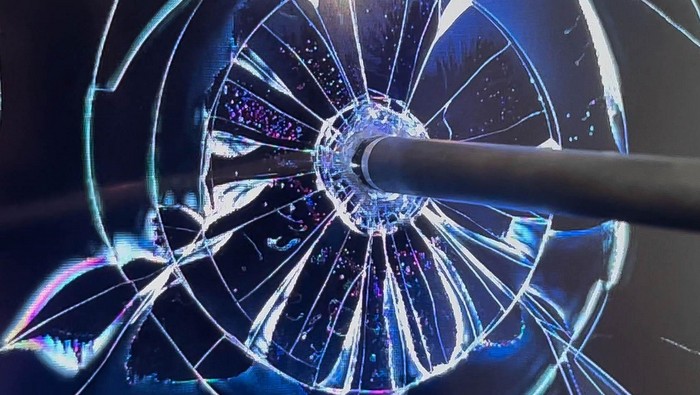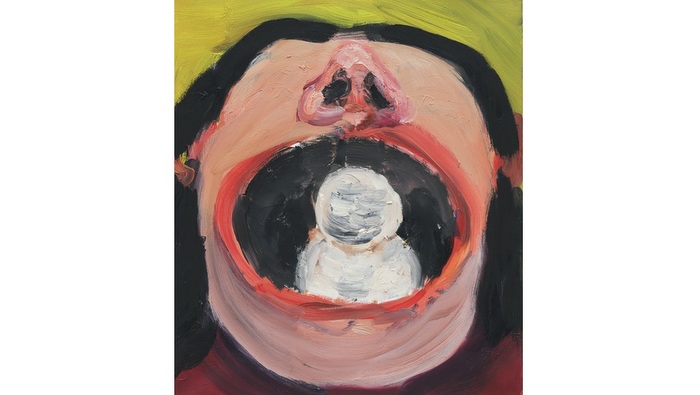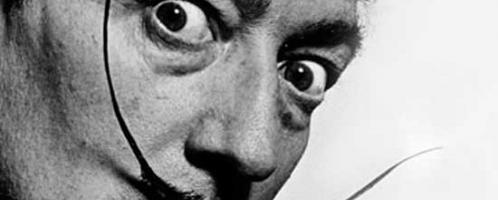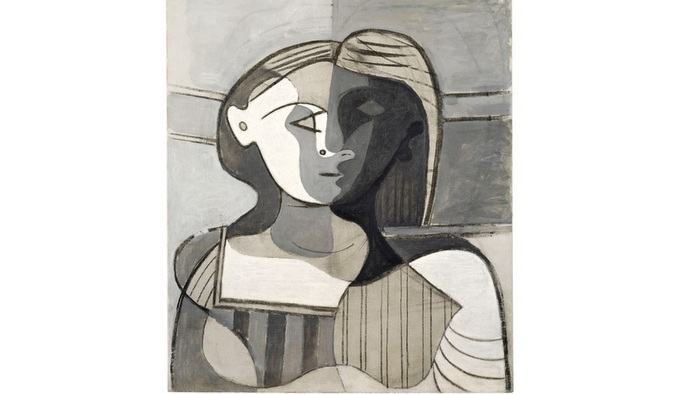By: Manuel Lopez Oliva
Gathered under the title "Memories of Surrealism" six printed series of Salvador Dali remain on exhibition in the Universal Art National Museum of Fine Arts building. They are lithographs and etchings that are grouped in "The Tales of Maldoror" (1934), "The Divine Comedy" (1960), "Fantastic Voyage" (1965), "Dali plays Currier and Ives" (1971), "Memories of Surrealism" (1971) and the last: "the Twelve Tribes of Israel" (1973). Its presence here has been a result of collaboration between the patrimonial institution of Cuba (with preliminary efforts of the curator Maximo Gomez) and American collectors as Alex Rosenberg (President of Salvador Dali Research Center, sponsor entity of the exhibition), which has been very tied to movement and appraisal of Cuban art, since he had the outstanding contribution to the legal steps to achieve excluding the Cuban artistic achievements of the lack of access to American territory. I do not think that is an exaggeration to say that this Dali that arrived in Havana is one of the most significant and instructive graphical displays that has visited us in recent decades.
Besides offering nearly a hundred revealing images of aesthetic features, sometimes with the eclectic poetic –own from the egomaniac and eccentric "genius", the exhibition invites us to rethink some key issues of psychology, sociology and economics of art. Indirectly shows how in the profuse dalian production and in his own life converge numerous thematic nodes, which are still valid beyond his case and manifest in the world (also in Cuba): not always the proper relationship between biography and artistic imagination, contribution expressive and morality, sexuality and creative freedom, literary reference and personal interpretation, cultural behavior and monetary interest, drama and irony, political position and profession; and between humanism and philosophical nihilism. They are all prints of high value to those who know how to grasp and learn by looking, for those who like the dream visions and improbable assemblies, and for those eager to see concretized - a foundational discourse in modern classical-the hallmarks of writing automatically, the surreal assembly that combines the different spatial rupture time, the subconscious landscapes, combinatorial representations of visible and invisible, sacred subverted, stereoscopic perceptions, sadistic-reflexive trope, a syrupy sentimentality hyped by open symbols, and what he named "paranoiac-critical method."
I must confess that when I had not yet come to study at the Art National School of those encouraging sixties; when I was still a boy from Manzanillo that saw the artistic connected to the proselytizers epic functions and -poetic beauty; and when the option by Goya and Picasso delimited my then restricted position on the Spanish aesthetic horizon, I found it difficult and even sinful to accept artistic expressions of Salvador Dali. His depictions sometimes in codes of ugliness and deformity, that declared anticommunist trend that he made public, the extreme and irreverent spirit of mockery crowned with a erotomaniac and deified clown presence constituted sufficient reasons to reject him and consider him the most finished of what an artist should not. However, to the extent that I was able to cultivate myself, see everything in art, penetrate variables perspectives of critical judgment, and face "live" to Dali creations in museums and other places of the world, I ended up understanding him and accepting him; and with him I reached to the certainty that there is no single condition of being artistic, because it brings to light the human and philosophical differences of the authors, while recording the noble and evil, natural desires and aberrations, the historical consequence and retrograde, light and shadows.
Thanks to this new appreciation of the architect as to visualize aspects of the contribution of Freud, Jung and Sade, I enjoyed in 1980 one of his singular performances in front of the named "Beaubourg" in Paris, in the Marais district, made ??precisely in a square where traditionally down-fire and knives, acrobats and magicians have shown. On that Sunday morning, Dali drew with chalk on the floor a huge circle divided into two almost equal parts, complete with a drawing of a Spanish peseta bill in one of these and with a dollar in the other. He finished his "work" asking the audience to deposit dollars or pesetas in the indicated areas ... with what the public was mixed up with such an improvised performance, allowing the painter to leave by one of the sides and so disappear as a ghost. It was only at that time when I could see it in person to the status of "showman" both used and noted on his face that it was an individual of conscious acting, mentally planned on what he was doing, and with a dynamic and variable capacity for configuration and meaning of his own art. That simple but spectacular action with the National Center for Art and Culture Georges Pompidou visualized with the participation of the attendees, the commercial principle of art named "Avida Dollar" that was inherent, and that in a sense Creole slogan today could become emblematic nomination of conduct in much of the Cuban artistic medium.
Later I had another bonding experience with Salvador, although indirectly and in our country, when the renowned art critic and Spanish Jurist Cesareo Rodriguez-Aguilera came to Havana, invited for the public presentation of the Cuban edition of his book Picasso , which prologue I realized. Cesareo, who had donated to Cuba the copyright of that enlightening essay- brought a volume of his own about Dali, that was published among us, without receiving any paid; so the editor of Art and Literature Victor Malagon and I drove to the National Museum of Fine Arts, to contemplate the artist's works belonging to the collection of that institution and chose one of them to be placed on the cover of the book that we were planning to do here. After appreciating the drawings and a painting entitled "Leda and the Swan", the then President of the Association of Art Critics of Spain chose that one picture in oil that was there; and as he was born in Figueres, hometown of Salvador Dali and that he maintained friendship with, offered- requested by the Direction of Bellas Artes to achieve the authentication of "Leda and the Swan" from the hands of the painter himself, what he made when he returned to the Iberian country, during a visit to the home of Dali. Although as surreal creator could not write, being sick and cased in bed, the Secretary Antonio Pitxot was responsible to - when the artist admitted his authorship of the work-sign the legalizing document, which was sent to us to Malagon and to me to hand over the museum in Havana; request that we delivered.
However, the beginning of the editorial work book Cesareo on Dali, had to dismiss this work as a cover illustration, because we were told that they had sold to buy air conditioners ... By obvious shame I never told Rodriguez-Aguilera, with whom I kept sustained friendship. And as the book was never published, which stayed as "editorial mattress" I do not know because of those in charge of the edition’s schedule who remained uninterested, or because the text contained a revelation of homosexual relations among Dali, Lorca and Bunuel, Cesarean died without knowing that "Leda and the Swan" had left the cultural thesaurus of Cubans.
During the exchange of correspondence with Rodriguez-Aguilera I understood better what apparently "kitsch" and that incongruous amalgam of signs as Dali defined as "pictures of hand painted dreams." I was already fully able to perceive the great legacy of art that Dali gave to his time and posterity, and to appreciate how much that influenced surrealists and magical realists, including Cubans and South Americans. The value of painting, sculptures, drawings and prints, his literary achievements and scenery, rare furniture and aesthetic objects, participation in film and happenings or performances that both enjoyed, had left the stores look ethics and policy unacceptable personality traits, to weigh his extraordinary artistic production. And without me noticing it, the visual poetry of Salvador Dali had sneaked into my imagination and penetrated my visual language, as Rufo Caballero warned in 1993, when he wrote a few paragraphs that accompanied my exhibition entitled “Sin Catalogo” in La Acacia gallery.
I must say with pleasure that the exhibition that motivates this commentary, "Memories of Surrealism", has revived interest in Dali's work not only in me but also in many others in the cultural sector. Although the most beneficial thing brought was the possibility that, with its rich universe of proposals and graphical procedures, has interested young artists and curators or critics, allowing them to see beyond the contagious reductionism derived from a linear understanding and misunderstanding contemporary art, to show the relevance and timelessness of all highly imaginative.
Source: Cubarte
Related Publications

Leo Pum presents HYPER LIKE at HYPER HOUSE
December 18, 2025
Aargauer Kunsthaus. Klodin Erb. Curtain falls dog calls
December 17, 2025












